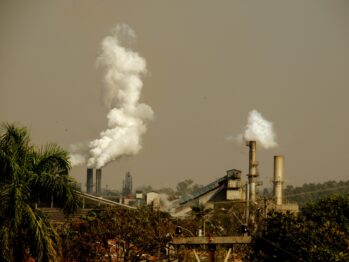All wealthy countries consume large amounts of electricity (Gertler et al. 2016). Electricity demand in poorer countries is projected to increase dramatically over the coming decades as households become richer and purchase electric appliances (Wolfram et al. 2012). However, electricity blackouts remain ubiquitous in the developing world (Gertler, Lee, and Mobarak 2017). Blackouts are costly, reducing firm productivity (Allcott et al. 2016, Cole et al. 2018), increasing production costs (Steinbuks and Foster 2010, Fisher-Vanden et al. 2015), and lowering household income (Burlando 2014).
Several factors contribute to the high frequency of blackouts in developing countries. The complex system of generators and wires that provides electricity to consumers is only as strong as its weakest link – voltage spikes and grid disruptions occur more frequently in places where infrastructure quality is poor (McRae 2015). Low-income countries may also struggle to meet electricity demand due to limited electricity generation capacity, as in Ghana’s Dumsor crisis (Dzansi et al. 2018). However, in India, consumers face frequent power outages despite relatively high-quality infrastructure and an ample supply of power plants. In our new paper (Jha et al. 2022), we identify a novel explanation for India’s power outages: when the cost of purchasing electricity rises, utilities choose to buy less from power plants, thereby restricting the amount of power that reaches consumers.
Indian utilities choose when to provide power
In almost every setting, demand falls as prices rise. Thus, it may sound obvious that utilities would choose to buy less power when the cost of power rises. However, in high-income countries, regulations force electric utilities to buy enough electricity to satisfy the demand of all consumers, regardless of cost. As a result, if someone wants to turn their lights on, the utility is legally obliged to sell them the electricity that lets them turn their lights on. In developing countries like India, such regulations are weak or non-existent. When an Indian utility faces a high cost of purchasing wholesale electricity to meet the demand of retail consumers – say, on a hot day, when inefficient power plants must fire up to produce the electricity to operate air conditioners – the utility can choose to purchase less electricity. This results in blackouts, where Indian households may not be able to use their air conditioners and have no way of communicating to the utility how much they would be willing to pay to use their air conditioners.
















